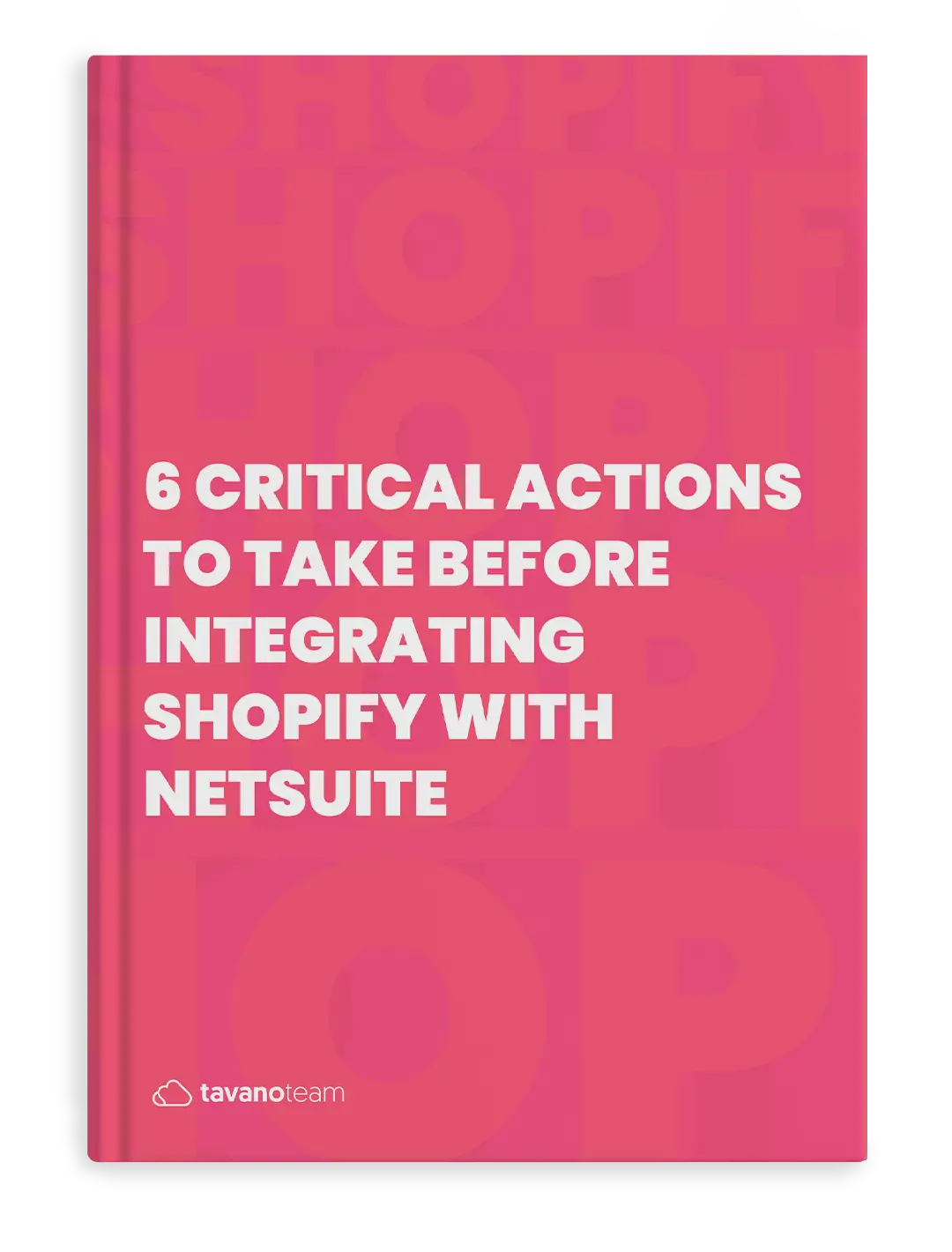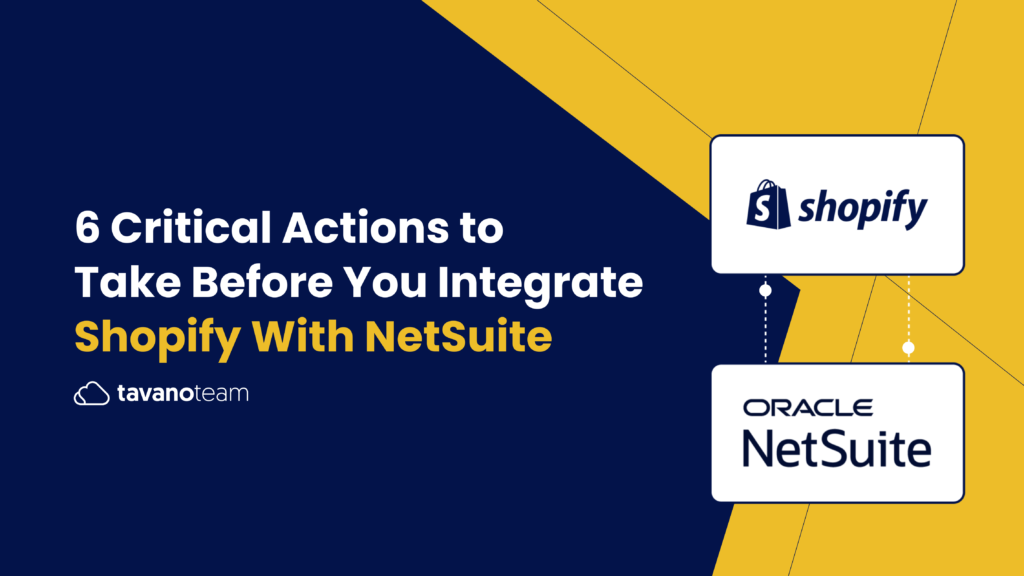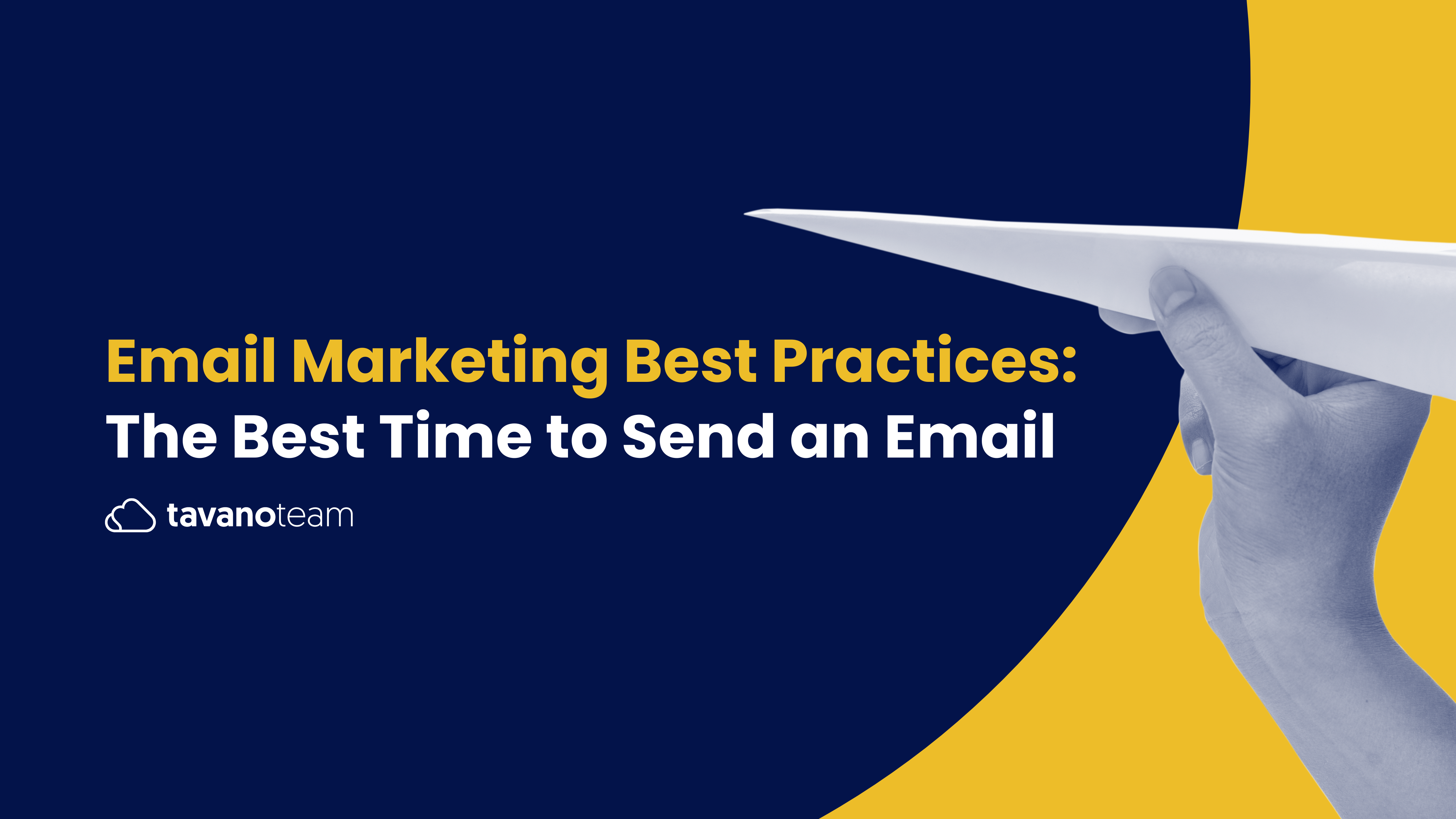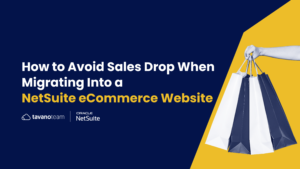So you’re planning a NetSuite Shopify Integration. Great! In fact, it’s probably the best decision you could have made. Having NetSuite’s powerful ERP together with Shopify’s flexibility, functionalities and scalability is truly the eCommerce version of having the best of both worlds.
Both platforms are pretty well-known, so you know that you’re not in uncharted territory. But just as with any integration or migration, you should proceed with caution. Because if handled poorly, even the most powerful tools will fail to give results and you’ll risk losing customers and revenue to your competitors.
In fact, 43% of companies find systems integration as the biggest challenge when expanding an eCommerce business. So, you need a plan. Are you ready?
Step 1: Plan your data migration carefully
The first step to integrate Shopify with NetSuite is to plan and identify which eCommerce processes you need automated. Mapping them out and using ROI as a measure for your decision-making is key, as well as listing all related applications and identifying the critical data you’ll need to be 100% accurate.
The second step is to choose a Central Data Hub, which will allow for you to unify and manage all the data across the applications.
Following that step, it’s crucial to decide which direction your data will be flowing from, be it from its origin or bi-directionally. Next, the decision needs to be made on whether you need real-time updates or just scheduled updates at specific time intervals.
It’s also key to define an integration strategy early on in the process. This type of strategy helps standardize all the processes and the tools which help add applications and workflows to larger business processes.
Ask yourself whether accompanying elements to your integration are the right fit for the skills your team harbors, or whether they can be easily implemented with readily available resources.
Step 2: Be vigilant of the integrity of your data
It’s also important to avoid dealing with unknowns. Before starting, assess your risks and face the most challenging things first to spare time if things don’t go as planned. Test everything out early on in the process so that you can have a pillow to fall back on as early as possible if the need arises.
Have the right expectations — become familiar with what you can and can’t do on NetSuite, and use the system in the way it’s intended to. A great tool to take into account is NetSuite’s SAFE Guide, which provides plenty of tips on platform integration.
Often, integration challenges arise in the form of errors. Upon investigation, the root cause is often a miss on the business process side, not the technical side. Some of those errors are to be expected, so think about your processes and map them out before you begin.
It’s also helpful to consider your use cases. The vast majority of things that we do with integration are manual activities that we’re now automating. During your business process mapping and design, use real data from your eCommerce account or other applications. Manually bring that over into NetSuite based on how you’re expecting your integration to work, and it will help to flush out implementation issues.
Step 3: Focus on the processes first, the rest will follow
You also need to remember that integration challenges are process issues and not technical problems. This means you will need to clearly map out your processes before you begin, in order to flush out implementation issues.
It’s advised to define your use cases, using real data from your eCommerce account, and manually bringing that over into NetSuite based on how your integration is expected to work. Details come second.
And when you do find an error, it’s important to move data validation upstream to prevent it, and not respond to it: your main concern should always be to get to the root of the problem, getting as close to the data issue source as possible. Track it, and if it’s a pattern, look for a way to fix it.
Working in integration means you need to establish ‘data contracts’, that is, clear documentation on everything your integration entails — source format, use cases, transformations during processing, destination format of the data, ensuring compliance, contingencies, etc. — to sign off on it with all parties involved, to set clear expectations around data.
A seamless integration is one that can be auditable and traceable from the very beginning, as you need to walk through records from end to end. Records must be clear and linking must always exist. NetSuite’s flexibility is a great advantage in this respect, as its tracking is as accurate as you can get.
And a final friendly reminder: if you want everything running smoothly, then you need to work for it. Integrations are high maintenance, they change and evolve over time, and if you don’t keep up with it, errors will start to pop up all over the place.
Step 4: Data consistency between platforms
Next you need to check that all the settings and every setup you planned will store the information where you want it, and where you need it.
More than checking that the information on both sides will be compatible, what you need to look for instances where you’ll risk having data scattered over the two platforms.
And think of a system to set in place for new properties, fields, or data that might come in the future so there is a clear plan of action and your information doesn’t end up all over the place.
Step 5: Choose the right partner
To integrate Shopify with NetSuite, Celigo offers the most complete integration. As a matter of fact, NetSuite was the first Smart Connector Celigo ever built, so they know a thing or two about it. Here are a few perks and benefits of integrating your Shopify store with Celigo:
Never Miss A Single Order
- If Shopify orders do not get synchronized in NetSuite, they are stored in Celigo until they are created in NetSuite.
- Easy access to one-click retry whenever errors occur (e.g., system downtime, incorrect SKU #)
- Manually override Shopify orders that contact invalid data to be sent to NetSuite.
Self-Customization
- Map data fields from a Shopify record type to a NetSuite record type through an intuitive user interface.
- Easily create complex business rules inside the mapping interface.
Self-Service Dashboard
- Gain complete visibility into integrations and error details for easy troubleshooting.
- Easily manage and update integration settings and data mappings.
- Enable alert messages to be sent to team members based on error types.
Connect Multiple Stores
- Connect additional Shopify stores to the same NetSuite account using a simple two-step process.
- Automatically enable default integration settings and mappings from the original store to additional Shopify stores.
Step 6: Choose the right connector
Its Shopify-NetSuite Integration App (SmartConnector) is a full-featured, prebuilt integration application with advanced capabilities. The main advantage of Celigo’s solution is that systems can be configured, deployed, and maintained with fewer technical resources. Also, it supports Shopify, Shopify Plus, and Shopify POS and uses the intuitive interface to quickly configure the integration so that you can set it and forget it.
Key Benefits
- Optimize the buying experience with timely fulfillment, accurate product availability, and real-time statuses.
- Scale operations efficiently by automating eCommerce processes.
- Achieve fast time-to-value with prebuilt, out-of-the-box integration.
- Minimize ongoing costs with automatic product updates and upgrades.
Key Features
- Sync sales orders and customers from Shopify to NetSuite in real-time.
- Advanced functionality to flag high-risk/fraud orders, identify order duplicates, perform variance reporting.
- Sync fulfillments/invoices from NetSuite to Shopify.
- Manage end-to-end order workflow by syncing order cancellations/refunds from NetSuite to Shopify.
- Sync products from NetSuite to Shopify.
- Advanced functionality to sync matrix items/variations.
If you need any more help, we’re here for you. Contact us for more information on the NetSuite Shopify integration and its benefits!

The Secrets for PAINLESS Shopify-NetSuite Integration!
Get your guidebook with the basic steps to follow before your NetSuite-Shopify integration for a faster, more flexible, and scalable eCommerce.
DOWNLOAD YOUR FREE COPYLearn more about our NetSuite integrations and our NetSuite eCommerce growth services:




